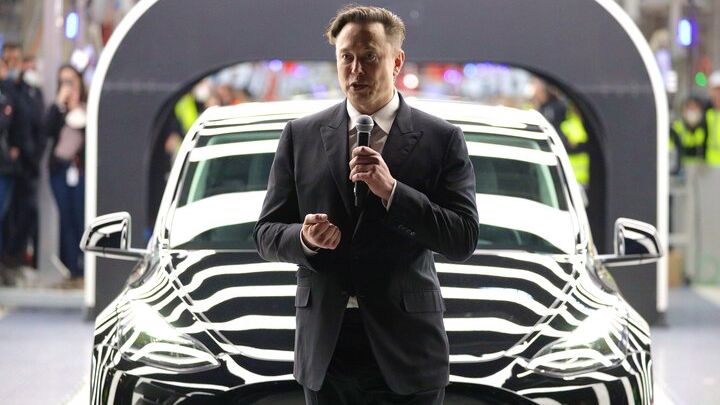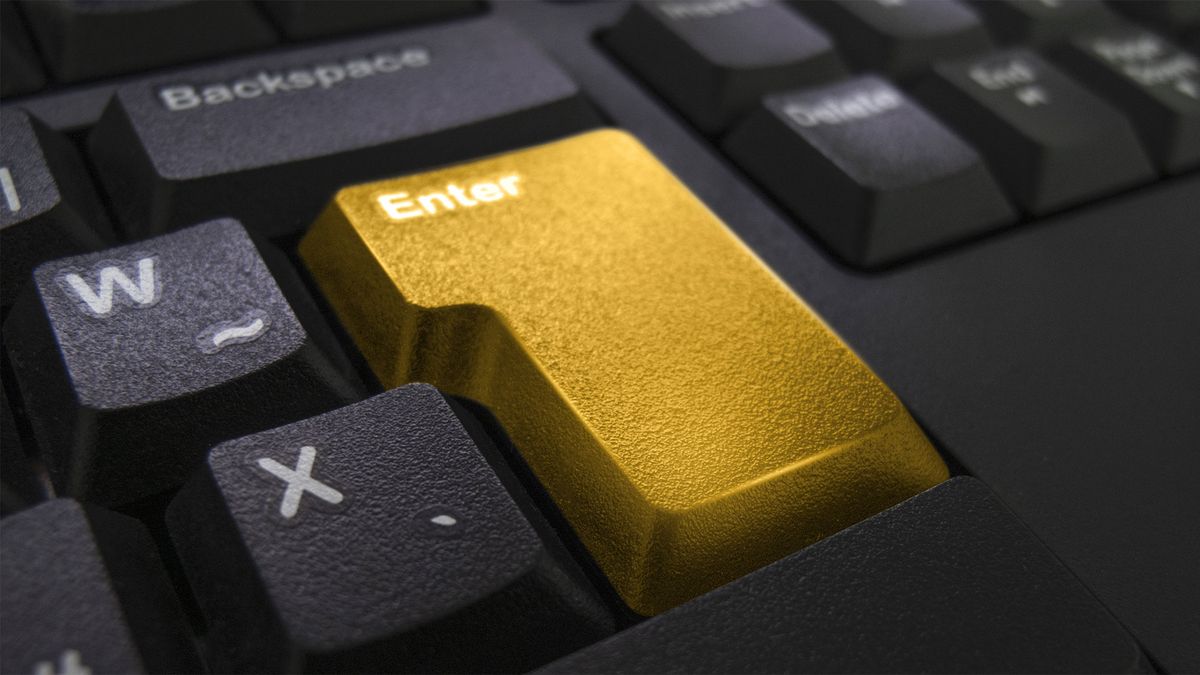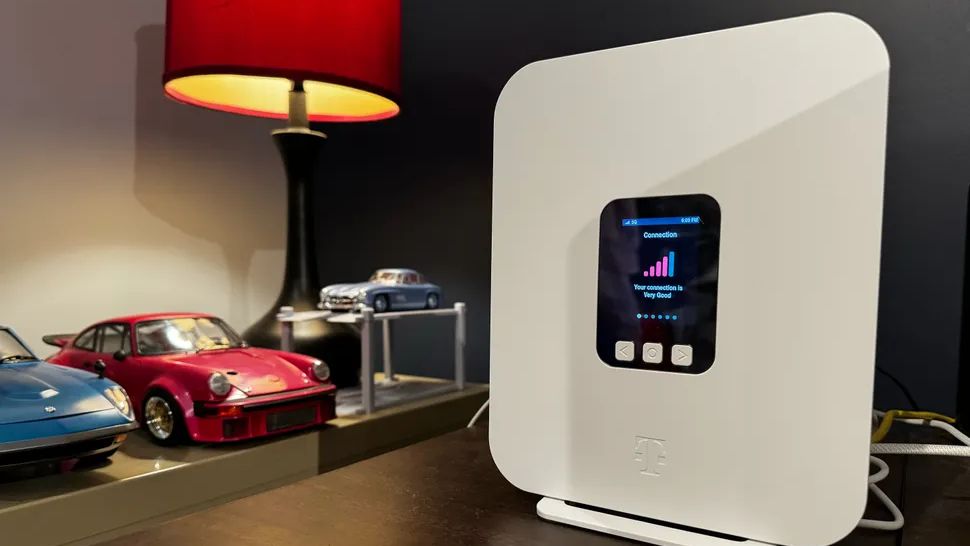
Pros
- Extremely fast M5 processor
- Better head strap for comfier fit
- Best-in-class audio-video quality
- Up to an hour more battery life than before
Cons
- Absurdly expensive
- Still not enough compelling apps
- Heavy, especially during long sessions
- Doesn't work seamlessly with all Apple devices
- The New Apple Vision Pro, Reviewed: Better, but the Proposition Is Still the Same
- A comfier head strap, but it's still heavy
- Improvements in performance are subtle
- When it works, it's amazing. But when it doesn't…
- VisionOS 26 makes evolutionary strides
- Missing pieces: Apps
- The training wheels need to come off
When I told my wife about the updated Vision Pro while I was wearing it, downstairs in our living room, she asked me what was different. I said it has a much faster processor and a new head strap. I also mentioned that it still costs $3,500.
I noticed her kind of looking through me while we were talking, so I asked if she was paying attention. "I'm just staring at your multicolored eyes," she said. She was hypnotized by my weird digital face on the front of the Vision Pro. I've had one of these headsets for nearly two years, and she still hasn't gotten used to it.
Apple made technological strides on the hardware inside their "spatial computer," the standalone mixed reality VR headset known as Vision Pro that first debuted almost two years ago. But the company, for all its design prowess, still hasn't made any headway on it looking less awkward or feeling less bulky.
The Vision Pro is upgraded, but its proposition is still largely the same.
Numi Prasarn/CNETIf the new iPad Pro is Apple's future computer of today, the Vision Pro is its future computer of some far-off time. The raw possibility of the M5 chip installed on the headset's array of cameras and high-res displays is fascinating. What's on my face, coupled with new support for PlayStation VR2 controllers and a wireless Logitech air stylus, could go some surprising places.
However, Apple hasn't reduced the price and app support lags far behind what it needs to be. The new Vision Pro isn't any closer to being a computer for everyone than when it first launched in January 2024. Earlier this year I wrote that Apple needs to hurry up with the Vision Pro, but I'm still waiting.
The Vision Pro strap is better this time, thanks in part to heavier counterweights that distribute the load.
Numi Prasarn/CNETA comfier head strap, but it's still heavy
The one included strap, called the Dual Knit strap, is an improvement. Instead of one knit band around the back of the head, now there's a second band over the top.
It's an elegant design for the most part. The knob now pops out so I can adjust the back or top band with a dial twist. The knit material is comfy. The weight is more balanced and the headset doesn't feel like it's falling down on my cheeks so much. I'm reminded of the weighted head strap I tried last year for Vision Pro made by ResMed, a CPAP manufacturer.
The Vision Pro's still heavy, and in fact it's heavier than the original by 5 ounces, thanks to the new strap's woven counterweights in the back. The Vision Pro weighs 1.6 pounds without the battery pack, versus the Meta Quest 3's 1.1 pounds with battery onboard.
Apple hasn't made any strides to lessen how big and it feels to wear the Vision Pro. The decision was clearly made to favor performance over long-term comfort.
My eyes still look funky.
Numi Prasarn/CNETImprovements in performance are subtle
Apple promises 10% better pixel rendering, so the display's text and visuals should look crisper. Motion blur is reduced because the headset can now display at 120Hz much of the time, too. Just like Apple's iPhones and iPad Pro, the dynamic refresh rate shifts happen automatically.
I'd say the changes aren't dramatic, and that most key parts of the experience are unchanged. It still has a narrower field of view compared with other VR headsets, giving more of a goggle-eyed view of things, and the hand tracking and eye tracking are still the same -- great, but not better.
Hand tracking in games does feel faster, by a bit. Synth Riders, the closest Vision has to musical fitness, keeps the glowing balls glued to my hands more smoothly. Maybe it's that refresh rate. Apps and games load a lot faster, and the headset starts up far quicker. It should, since the M5 is several generations past the previous M2.
Working in Vision Pro over the weekend, casting movies and using the iPad Pro and also checking my phone. If only the Vision Pro seamlessly worked with all the devices better.
Scott Stein/CNETWhen it works, it's amazing. But when it doesn't…
I still find wearing the Vision Pro to be a wild and incredibly smooth experience when everything works. Right now, for instance, I'm casting an iPad Pro into the air in front of me, writing these words while I watch Star Wars: The Last Jedi in 3D. I see my family moving around me. I forget I'm in a headset. It's more like a system of infinite screens and 3D audio, with layers of VR or mixed reality at times if I need it.
I watched the New York Jets take another loss over the weekend while writing this review in-headset and testing apps, even casting the screen from the new iPad Pro to write my review between devices.
When it all works, like connecting to my Mac to extend the display and float everything else around me, it's better than any other VR/AR headset. Those parts aren't pushing forward far enough yet to justify the hardware, though.
The Vision concept aspires to be invisible but I'm still wearing that bulky headset. There's still no way to comfortably type with hand tracking alone. You'd have to use a connected keyboard to actually write, or you'll be hunting and pecking with two fingers on a floating keyboard.
And the headset still doesn't seamlessly work with iPads or iPhones or Apple Watches yet. It should, because these things could be controllers or dashboards that Vision could work with.
The Vision Pro's size is still the same.
Numi Prasarn/CNETI've also seen bugs. Sometimes apps mysteriously quit, or the headset restarts. Vision Pro's interface, which relies on eye tracking to "select" things, still isn't always precise. I use prescription lens inserts but I find that small icons in apps or on Safari are hard to select and click. I wish there was an easy pointer mode for precision, instead of leaning on just my eyes. There is one in Accessibility settings, but it's not a fluid part of the general OS experience yet and it should be.
VisionOS 26 makes evolutionary strides
The newest version of VisionOS can make widgets appear around my room, stuck to walls, appearing as windows. I see views of trips I've been on. I have posters of music playlists. I see a clock and weather near the sofa.
My 3D-scanned Persona avatar is still uncanny, but it's getting awfully good. No one else has an avatar system like this yet, and when you gather with other people as their Personas in a space to chat or share 3D objects or a presentation, it feels like weird telepresence.
However, Apple has offered very few tangible ways to use this collaboration in clear and new ways, and so few people have Vision headsets that I rarely get to even try. Apple should allow iPhones or iPads to share AR experiences with Vision Pro, but it doesn't yet. The conversion of photos to spatial 3D using AI is also cool, but I wish videos could be converted automatically, too.
The Vision Pro now supports PlayStation VR2 Sense controllers. When I tried they paired easily via Bluetooth, but in a ping-pong game the responsiveness felt slower than on similar games on the Quest 3.
The new strap's adjustment knob looks the same, but pops out for two-level tightening now.
Numi Prasarn/CNETMissing pieces: Apps
Despite working with PlayStation VR2 Sense controllers and a wireless spatial stylus for Vision made by Logitech, the Muse ($130), Apple hasn't made enough advances to bring high-end games and creative apps to these inputs yet. Apple hasn't evolved any of its own apps either. There's still no 3D Maps, no immersive GarageBand or Logic, no VisionOS iMovie or Final Cut Pro, and no Apple-made art tools. The popular 3D app ZBrush still isn't on Vision, either.
Apple still doesn't have its own Vision 3D Pencil accessory, similar to the standard Pencil for iPad. And it still hasn't put any camera-enabled AI on the Vision Pro, meaning that the big AI processing possibilities inherent in the M5 chip go largely untapped.
If Apple wants people to take this $3,500 spatial computer seriously, it needs to put all these things at the forefront now that Vision Pro has an M5 chip. It's well past time.
The training wheels need to come off
I do use the Vision Pro from time to time in my life: as a personal cinema, and to extend my monitors when I work. But to do work, I use it with my MacBook. It's an accessory, in that regard. But with its M5 chip onboard and its price, this is meant to be a full computer. It is a full computer, to be sure, in that it runs tons of apps, iPadOS-style and immersive. But compared to the iPad Pro, which is finally feeling like a full-fledged experience, the Vision Pro -- which costs far more -- doesn't.
The Vision Pro still feels like a first-generation product. Apple needs to figure out how to make future headsets feel lighter, more like glasses. It needs to lean on processing and battery from connected Apple products like phones and Macs and iPads. The headset should have all the tools anyone needs to create, share and connect with whatever Apple device they want to use. And its unique app offerings need to be even better, its inputs even more fluid and flexible.
Nearly two years later, Apple's Vision Pro is still the most advanced piece of mixed reality tech anyone has brought to market. But to what end, and what's next? Apple may be moving to smart glasses, or maybe some device-connected glasses-like display. A smaller, less-expensive headset that could fold in some of Vision's best features. The form's not settled here at all.
In the meantime, this expensive and heavy headset isn't an upgrade anyone needs.









 English (US) ·
English (US) ·